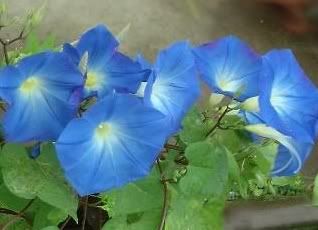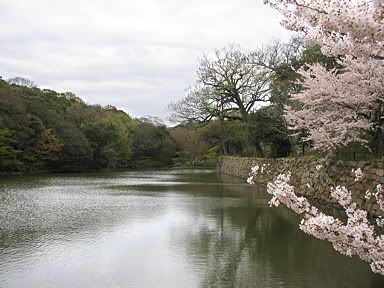 The Japanese plum or ume (sometimes referred to as Japanese apricot) has played an important role in Japanese culture for many centuries. It was originally introduced from China.
The Japanese plum or ume (sometimes referred to as Japanese apricot) has played an important role in Japanese culture for many centuries. It was originally introduced from China.
The plum is associated with the start of spring, because plum blossoms are some of the first blossoms to open during the year. In the Tokoyo area, they typically flower in February and March. The event is celebrated with plum festivals (ume matsuri) in public parks, shrines and temples across the country.
Like cherry trees plum trees come in many varieties, many of which were cultivated by humans over the centuries. Most plum blossoms have five petals and range in color from white to dark pink. Some varieties with more than five petals (yae-ume) and weeping branches (shidare-ume) have also been cultivated. Unlike cherry blossoms, plum blossoms have a strong fragrance.The Plum is a small tree, having generally a distinct main stem five or ten feet high.
The actual ume fruit is more sour than the western plum or apricot, and is usually processed in various ways before eaten.
The most popular processed form is the umeboshi, a sour, pickled plum, which is usually enjoyed with cooked rice The umeboshi has one of the most typical Japanese flavors. Umeshu, a sweet alcoholic beverage made of plums, is also popular.
(http://www.japan-guide.com/e/e2013.html

You can use umeboshi for:
* over acidity in the stomach
* intestinal problems
* tiredness
* after consuming a harmful food such as sugar.
* they help calm the nervous system, activate the digestive system, they are helpful in case of common colds, coughing etc.
* umeboshi increases endurance and stimulates the liver’s and kidneys’ function of dissolving and expelling toxins, thus purifying the blood.
Apparently during the Nara Period(8th Century), the blossom of the ume tree was preferred over the cherry blossom, which became popular after the Heian Period.(This seems odd to me. It doesn't seem true in the sense of Genji and how popular the cherry blossom is but I don't know.Wabi sabi came out of Genji right?) The tree was also well loved and celebrated in China, where it is most commonly used as decoration during the Chinese New Year. The blossom is also the national flower of the Republic of China and features prominently on currency and other national emblems (http://www.answers.com/topic/ume).
In Relation to Genji:
1.Brought up many times throughout The Plum Tree Branch (Umegae):
*"on the tenth of the second month a light rain was falling and the red plum before Genji's residence was in magnificent and incomparably fragrant bloom"(548)
*"a messenger arrived with a letter attached to a plum branch from which most of the flowers were gone.. The gift knots on the dark blue one represented five needled pine
(pine is associated with Genji's daughter and Akashi) and those on the white plum blossoms....
*Gets related back to the warblers first song on pages 550,51
2. To no Chujo puts his new found daughter under the care of the Consort whom he compares to the plum blossom, which is valued for it's beauty and for its healing properties."She had more simplicity than absorbing beauty, and with it a warmth of manner that recalled plum blossoms just opening at dawn; and he felt that her smile, which seemed to leave much unsaid, distinguished her from anyone else" (474).
3 .In The Warbler's First Song, Genji compares the Safflower's nose to that of the plum: "Genji saw that there was no one to enjoy wither them or the scent of the blossoming red plum.
(poem)Having come again to visit the springtime tree where I lived of old, I observe before my eyes a flower like none seen before"
footnote in book:Hana ("flower") also means nose. Genji likens himself to the warbler who visits the flowering plum in spring (436).
Aside note on the Warbler:

*The Warbler eats fruit
*It is one of favorite motives of Japanese poetry, and is featured in many poems. In poetry the bird is associated with the ume blossom.The beauty of its song led to the English name
Japanese Nightingale, though the Japanese Bush Warbler does not sing at night. This name is no longer used.
*In Japanese architecture there is a type of floor known as "uguisubari", which is generally translated into English as "nightingale floor". These floors have squeaking floorboards that resemble the Japanese bush warbler's low chirping, and are meant to be so designed to warn sleepers of the approach of ninja
(Cool).*The bird's droppings contain an enzyme that has been used for a long time as a skin whitening
agent and to remove fine wrinkles
(EWW). It is sometimes sold as "uguisu powder". The droppings are also used to remove stains from kimonos. (http://en.wikipedia.org/wiki/Japanese_Bush_Warbler)

















